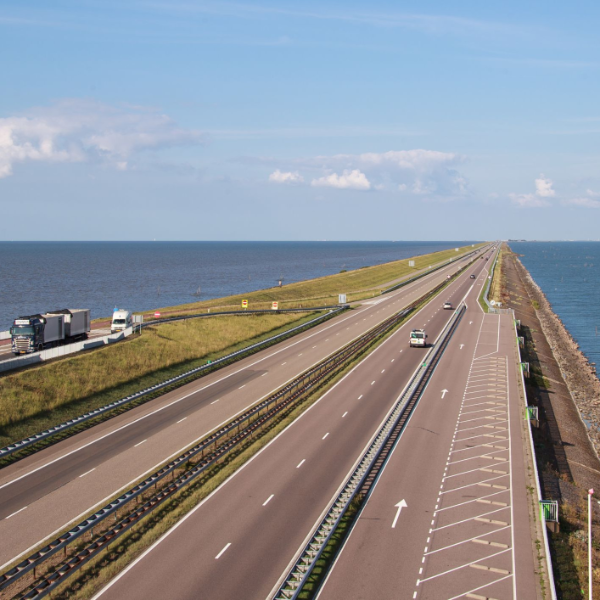Hydraulic engineering icon Afsluitdijk

Hydraulic engineering icon Afsluitdijk
The 32-kilometre-long Afsluitdijk between North Holland and Friesland has protected the provinces along the IJsselmeer and Markermeer lakes from flooding since 1932. This dam, with a raised road and with sluices and locks, was the longest dam in the world for a long time.
In 2006, an inspection found that the Afsluitdijk was in need of an overhaul. Under the Water Act, the Afsluitdijk must be able to withstand a storm with a probability of occurrence of 1/10,000 per year, which, for the Afsluitdijk, would result in waves with a height exceeding 4 metres. The dyke and sluices and locks did not meet this requirement. The Afsluitdijk should also be able to discharge more water from the IJsselmeer into the Wadden Sea in the future. Until then, discharge was only achieved by free-flow discharge through the sluices, but there is insufficient discharge time available in the (near) future due to rising sea levels to maintain the target IJsselmeer water level in winter. In addition to water safety and discharge, the motorway on the dyke no longer complied with the latest guidelines, and therefore its safety had to be improved.
From 2012, Witteveen+Bos handled the planning study for Rijkswaterstaat, which focused on improving water safety and increasing water discharge capacity. The signing of the zoning integration plan in May 2015 was a milestone after years of efforts in design, impact study, engagement and stakeholder management and contract preparation.